-
Posts
1,620 -
Joined
-
Last visited
Content Type
News Articles
Tutorials
Forums
Downloads
Everything posted by mrwonko
-
And Entities can be filtered with Alt + 2.
-

JA - solid_ok flag not working for waypoints?
mrwonko replied to SanguineHipster's topic in Modding Assistance
Waypoints can manually be linked using target/target2/target3/target4+targetname, yes. -
Not quite the same, but the FALLING spawnflag (64, I believe?) is for this.
-

I don't think gtkradiant 1.6 will support jk2\jka
mrwonko replied to Acrobat's topic in Jedi Knight General Discussions
It's not meant to use more Ram, it just keeps it from crashing if it does. -

I don't think gtkradiant 1.6 will support jk2\jka
mrwonko replied to Acrobat's topic in Jedi Knight General Discussions
What problems arise if you try? You'll need to increase the view distance and portal distance and lightmapscale? So why don't you just start a new topic since you have an entirely unrelated new question? Well, if it were to run out of RAM it'd crash with "safe_malloc failed" instead of taking forever. -

I don't think gtkradiant 1.6 will support jk2\jka
mrwonko replied to Acrobat's topic in Jedi Knight General Discussions
This is outdated. The JAPack is now included by default (since it's been optimized for size). 64MB Ram? Wow! Joking aside, this made me curious as to whether the compile could be sped up. I have enough work on my hands so no promises, but if you could send me a map that takes forever and the settings you use to compile it I might try to investigate why it's so slow and what can be done about it. I'm afraid major speedups won't be possible without major changes though... -

JA - solid_ok flag not working for waypoints?
mrwonko replied to SanguineHipster's topic in Modding Assistance
I'm not quite sure about solid_ok, but why don't you just move the waypoint around a tiny bit instead so it's no longer inside something solid? -
Any Hex Editor will do, there's plenty. Most notepads won't.
-
The textures lump in the bsp contains surface and content flags. That's what he's referring to.
-
I've taken a look at the briefings - there's a briefings.str where you just enter the desired briefing with the level's filename as the reference, like this: REFERENCE ta_fac_end LANG_ENGLISH "Get yourself out of that facility as fast as possible."
-
I believe the internal names for the objectives are fixed, so you're limited to replacing existing ones. That's done by editing the objectives.str or whatever its name is and using those names. As for the briefings - do you mean the loading screen texts? I can't quite remember how, but you can do custom ones.
-
Are you sure the script is executed? You can use icarus debug to display commands as they're executed, might require developer 1. Try making the trigger trigger something else as well to make sure it triggers. Post the script.
-
I've never experienced either of that, could you provide a small example map of that happening?
-
I'm sure there are people who could help you if you asked specific questions. "I've noticed some thing aren't doing what I'm used to" is nothing anybody can really help with.
-
I believe Q3Map2 can extract the lightmap from a .bsp (yielding a set of images) so you can paint it (in your case, make it brighter) and then use Q3Map2 to put it back into the .bsp. Changing the sky would be a matter of editing a .shader file to point to a different sky or replacing its textures - you could open the .bsp in a text editor and do a search for /skies/, that might point you to the sky-shader used.
-
You need to configure your BehavEd correctly, setting the command description file to behavEd.bhc and the source files path to the SourceForBehavEd directory.
-
But those are really just like the .txt files BehavED saves, except renamed. For some reason.
-
Wrong, .ibi is compiled. .icarus is the file extension Raven apparently used, you can just rename them to .txt to open them.
-
The NPCs need to have the CINEMATIC spawnflag set so the AI doesn't try to do anything except what you tell it to. You give them names using npc_targetname and affect them in your script using the affect command. You tell them which waypoint_navgoal to navigate to using the ordinary waypoint network by specifying its targetname in a set(SET_NAVGOAL, targetname_here) and use set(SET_ANIM_BOTH, ...) and set(SET_ANIM_HOLDTIME_BOTH, ...) to make them play specific animations. You can use tasks with dowait() for a script to wait for the NPC to walk somewhere and use signal() and waitsignal() to synchronize multiple NPCs. You can also create level-specific custom animations by putting them in models/players/humanoid_<levelname>/humanoid_<levelname>.gla - use BOTH_CINEMATIC_X, which are meant for just this. The JKA SDK contains all the SP scripts, so you could take a look at those. There are 3 SP levels or so included in the Radiant Jedi Academy files, which may also help shed light on it.
-
Yeah. 56 is either FLUSH or INSERT. Those names - like the second parameter of the tag() command, which can be either ORIGIN or ANGLES - are turned into numbers as described in behaved.bhc. Looks like the decompiler doesn't turn 'em back into the identifiers. You'll have to do that manually.
-
Could you post an example of a broken decompiled script?
-
This. Keep the entity limits in mind, you can't have all that many.
-
Oh, right, it's the light stage that fails. Works once I delete those brush cylinders though.
-
Well, I get mail everytime somebody posts. I can compile that map without a problem... However there are a couple of problems with the map. First of all, and this is unrelated to your problem, more of the brushes should be detail, like the pillars and basically everything but the floor and the walls. (You can hide detail brushes and patches and entities with ctrl+d / ctrl+p / alt+2 respectively so you only see the structural brushes. Also, and this might just be the cause of your problem, why would you do a round pillar using a brush? That's exactly what curves are for. Curve -> Cylinder gives you a nice cylinder, and Curve -> End Cap gives you nice end caps for your cylinder. Don't use a 20-sided brush. In fact there's hardly ever a need for a brush with more than 4 sides.
-
I'm not entirely sure I remember this right, it may be caused by having a many-sided brush (or more specifically a brush-side with too many vertices) - anyway, as is always the case with these problems, the easiest thing would be for you to supply the map so we can take a look.



